Enhancing the quality and deer attractiveness of oak/hickory forest by using Timber Stand Improvement (TSI) practices.
By Ultimate Land Listings, LLC
Did you know that most forest areas across the country are way below grade in terms of their attractiveness to deer and other wildlife?
In fact, many, if not most, of the forest-land in your region — maybe even your own property — really aren’t that appealing to whitetails during most times of the year!
And — did you know — that unmanaged forest tend to grow lower quality lumber and are thus less valuable to the landowner as well?
These forest would really benefit from the wise implementation of a timber stand improvement (tsi) program!
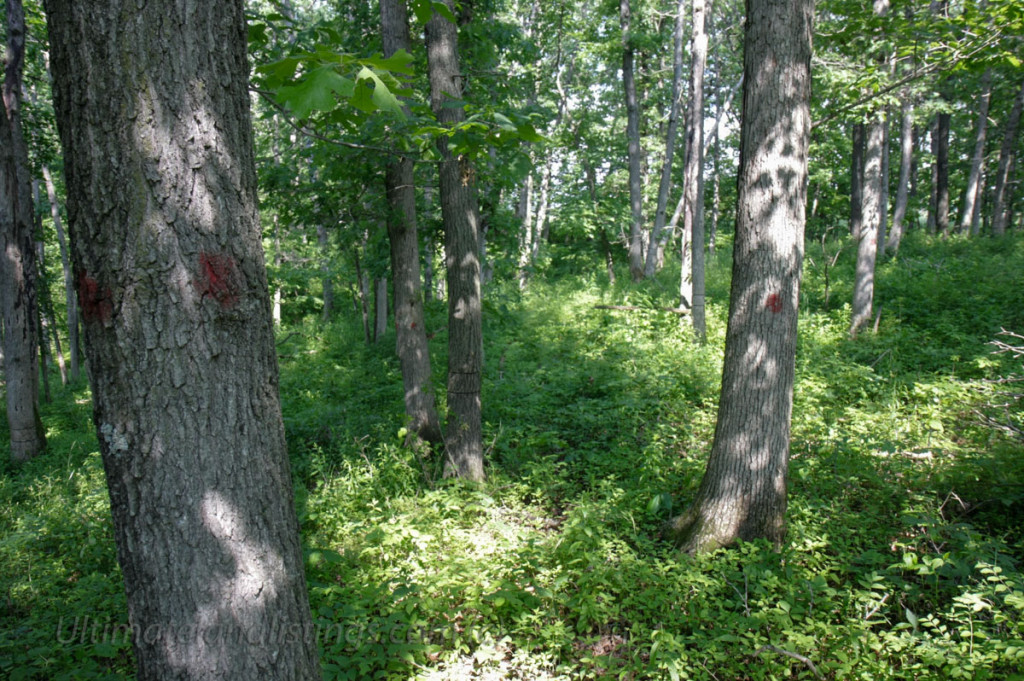
(TSI, or timber stand improvement, is a huge boon to the health and quality of a hardwood timber, such as this upland stand of oak and hickory. Wildlife, such as deer, gain huge benefits from it as well in the form of enhanced acorn production, more sanctuary cover, and more food choices. Typically crop trees — the ones desired to be kept for management — are marked in some way with tree paint and undesired or competitive trees nearby are ringed or girdled with a chainsaw to eliminate competitive crown space)
Take, for instance, a mature oak timber: though beautiful and valuable, such a timber usually means only one thing to whitetails: acorns.
There is no doubt — deer love acorns! And, deer will be in that forest scarfing them down, hog-like, during fall. (primarily in October and November). But whitetails find little bedding and browsing attraction in a mature forest. The understory tends to be sparse — with little in the way of bedding cover.
And available deer browse is almost non-existent in a mature forest. Trees are too mature and are, thus, too high off the ground for deer to utilize for feeding off the leaves and stems.
Studies and my personal observation have shown that deer, especially older, bigger, bucks, will avoid establishing core areas in such a forest and will use it mainly over a two-month period during good acorn years in autumn.
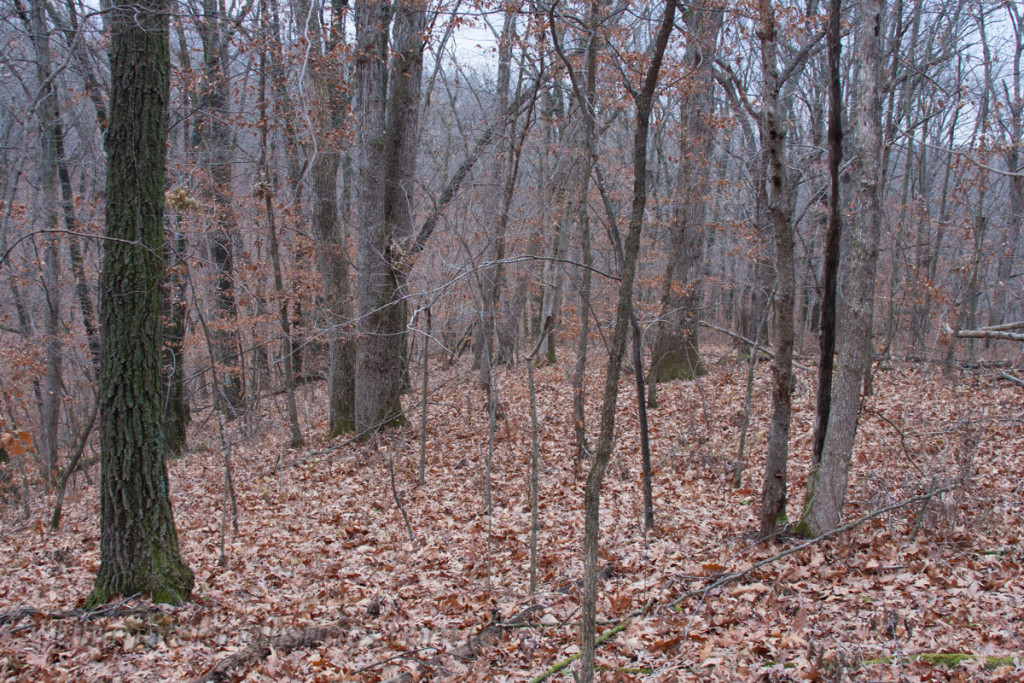
(A plain-Jane white oak forest section such as this Iowa forest offers little food or cover for deer. The forest canopy is generally closed off so that very little sunlight hits the forest floor. Because of this, little ground-level vegetation can grow — including young oaks! Such forest stands, benefit greatly from timber stand improvement practices (TSI). TSI generally enhances wildlife value, the vigor, and the value of the forest stand.)
The best forests for deer are young and diverse — they contain a wide mix of native species.
These forests usually contain a mix of oak species such as white, red, and black. They also contain plenty of trees and shrubs at deer browse height to provide valuable bedding and browsing habitat over the course of the year.
The best forests for whitetails tend to be younger, well managed ones that feature some sort of integrated forest management plan.
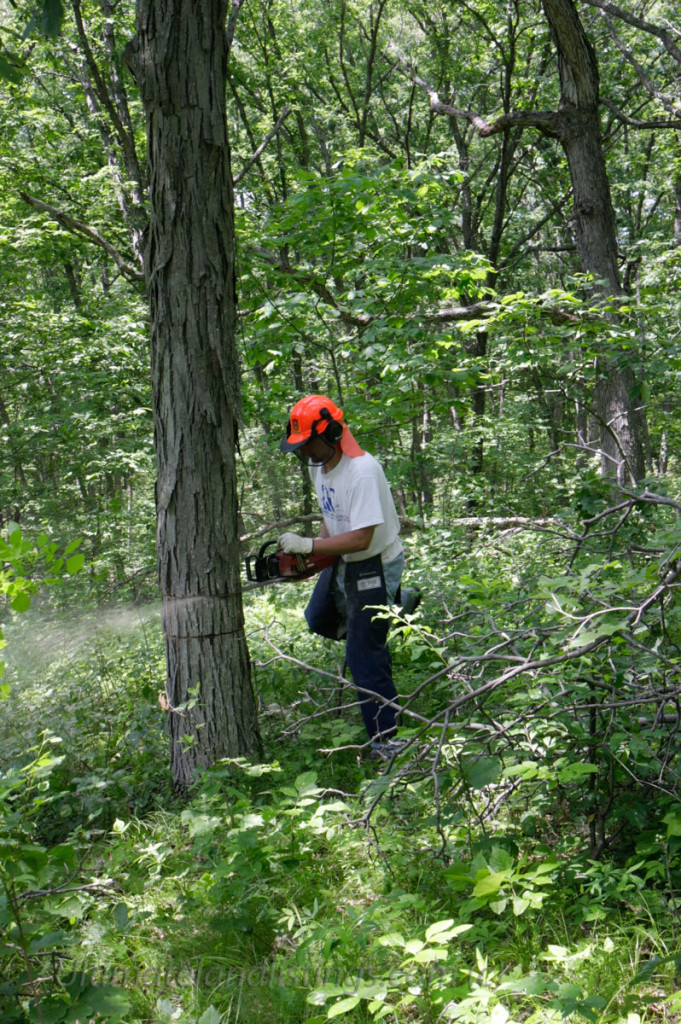
Timber stand improvement is considered a component of a well designed forest management plan that serves to accomplish specified goals within the plan. (Don’t worry if you don’t understand what these things are! Call you local FSA office and ask for a list of area consulting foresters and/or the local state forester. These people are there to help landowners design such plans that meet their goals).
What are some of the things that one can do to increase the attractiveness of the forest(s) that you maintain?
In some instances, a timber harvest will yield significant benefits. Harvesting some of the older trees will open up the forest under-story for sunlight penetration and help to provide rapid new growth of a vast array of woody vegetation.
For instance, a few summers we completed a major harvest of oak on one of the properties we manage. And guess what? There are already more deer present in the new area than there were when the forest consisted of only big oaks!
And now, because of the timing that we established when we elected to cut the large mature oaks, we have a thick carpet of new seedling oaks across the landscape there — an estimated 5,000-10,000 new oaks across the area! (No — we didn’t plant them. But, by timing a harvest closely with a heavy mast production the year prior, you guarantee yourself thousands of new seeds across the landscape to generate new oak growth. Careful observation and management is needed, though, for the first 10 years to ensure that these young oaks are not getting crowded-out by any undesired species, however. If that happens one must go in and cut out — and spray — the “junker” or “undesired” species that would otherwise be over-shadowing the young oaks).
Over the next 20 years, on this property, the rapid growth of new oak browse will ensure a much higher deer carrying capacity on that property and will have much greater attractiveness to all whitetails, including monster bucks.
On top of that, the new trees will be managed for veneer quality by incorporating wise timber stand improvement practices throughout their lifetime. So not only will the new early stage succession of forest provide top-notch hunting but will provide a high-yielding investment to the landowner as well!
In my opinion, there is nothing wrong with managing a forest as a great monetary investment as long as the wildlife benefits as well as the landowner!
Sometimes you can have the proverbial cake and eat it too!
A few years ago my good friend asked me to look at his land and see what we could do to help him upgrade the size of the bucks he’s been seeing. I suggested two things to him: a clover plot and a timber stand improvement on his forest acres.
We did the timber stand improvement on his place recently and just this past summer he showed me some incredible photos of some true monster bucks he’d taken with his trail cam. The clover plot has helped him hold deer on his property over the summer and the TSI had greatly increased deer use of his timber.
Now, his forest produces much better and much higher quality of browse; and, the acorn crop has been substantially upgraded as well. He’s been very happy with the results, to say the least!
Not only has the deer hunting improved on his place but the value of his timber has dramatically increased as well. (whether on paper when/if he ever sells the property or should he some day harvest some trees).
Now, I have learned that there really is no such thing as a free lunch. But in this case, the lunch was cheap! The government paid 75% of the total cost of the forest work he had done! It’s pretty hard to beat that sort of deal!
The thing is, though, this deal is not limited to my friend: many landowners have forests that qualify for this sort of habitat upgrade help, they just don’t know it! (landowners should call their local ASCS office and ask for available cost-share programs for forest management practices)
Hey good luck out there in the woods with your timber stand improvement projects and have fun!
One simple and inexpensive thing a forest steward can do to promote more deer use of his forest is to fertilize favored browse species or select trees. One can simply take a hand seeder and spread a general 10-10-10 fertilizer on woody browse deer food (such as coral berry) to upgrade the nutrition and attraction to deer. One can also insert a few cupfuls of such fertilizer under the topsoil along the drip-line of a few larger select oaks or fruit trees.
A few other ideas to help attract deer to your timber below:
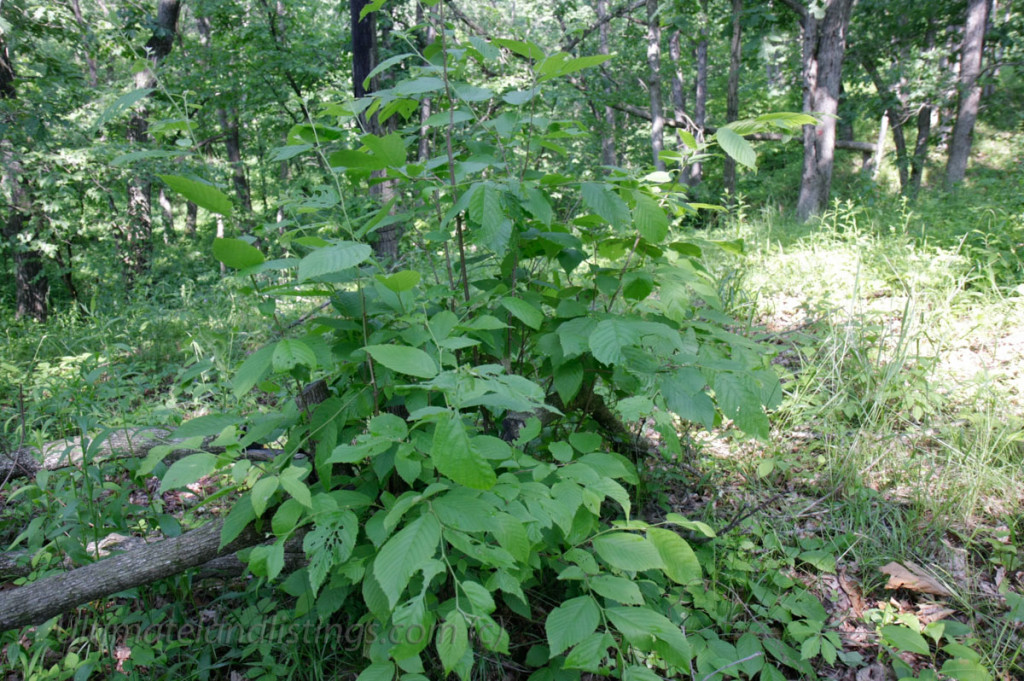
(Stump-sprout vegetation growth provides near instant ground level browse for deer. By just girdling a non-desired tree — and not spraying the cut with herbicide — the roots below ground remain alive the the stump start to grow “sprouts” — perfect deer food!)
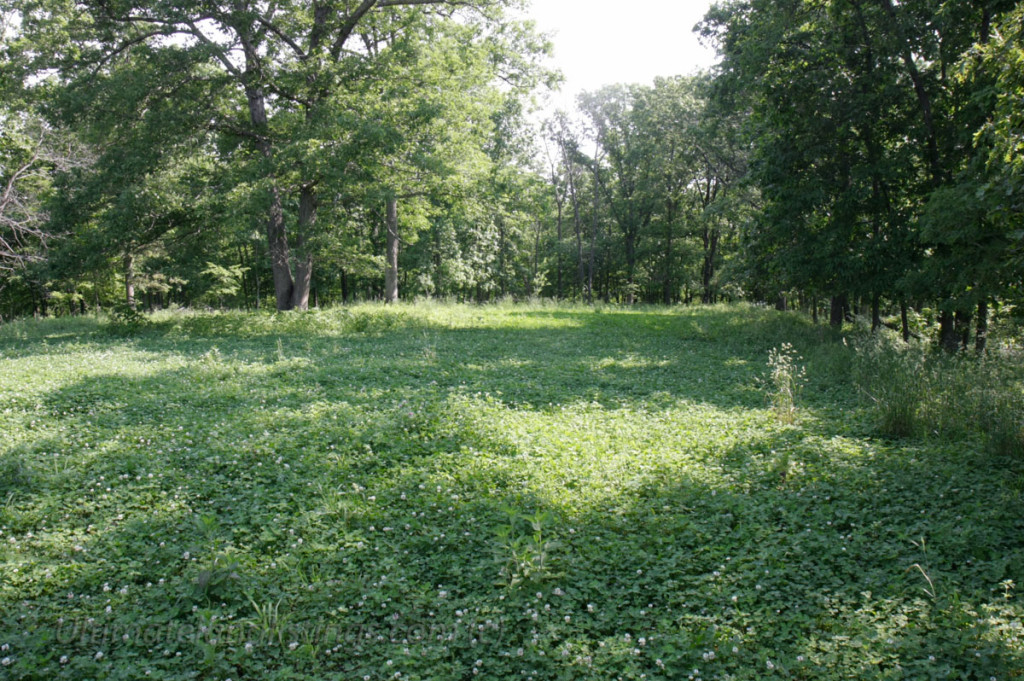
(Small clover plots like the one to the right that sits inside a large tract of white oak timber provide a great dinner plate area for deer. It’s a great additional food source — high in protein — that will help the deer herd in your area and enhance the area’s attractive to deer)

